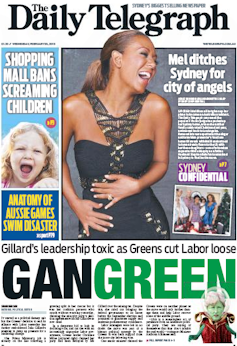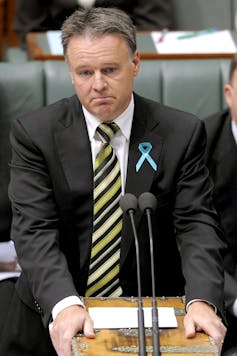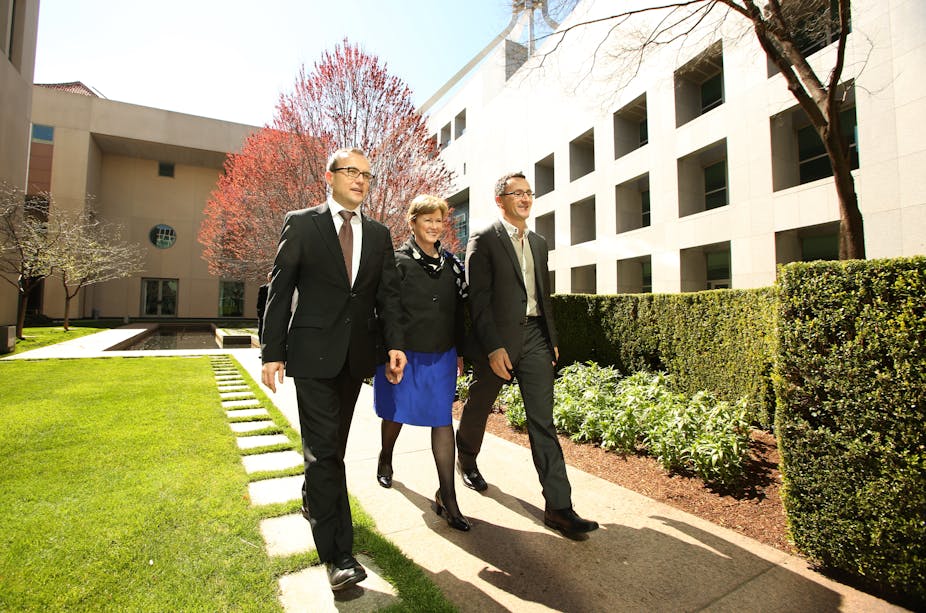The Daily Telegraph isn’t known for holding back. As Stephen Conroy discovered in an already infamous front page, if you’re in its firing line, you’ll know it. It’s a world where a relatively pragmatic media policy is enough to get you compared to mass murderers.
So when The Daily Telegraph depicted Greens MPs as invading aliens last month, it’s safe to say it wasn’t a friendly allusion to Steven Spielberg’s E.T. While Spielberg’s film suggested that, beneath the surface, the alien and the human are fundamentally alike, The Daily Telegraph was implying a brand of Greens radicalism far beyond the mainstream.
Across its coverage of Christine Milne’s decision to cut her formal alliance with Labor, the newspaper’s stance was clear: the Greens were merely confirming their position as extraterrestrial extremists, divorced from conventional reality and ideology.
“The Greens”, The Daily Telegraph editorialised, “inhabit a planet far from any galaxy that the electorate might recognise as real”.

Regular columnist Joe Hildebrand made this point more bombastically on Sky News. The party, he argued, is comprised of “lunatics, imbeciles and undergraduates … They should get up, get on the next boat to Cuba and leave the rest of us normal people alone”.
Of course, such a response is both unsurprising and, in its way, understandable. The Greens and The Daily Telegraph tend not to overlap in either style or ideology. Where research by Ariadne Vromen found that Greens members are likely to be philosophically “post-material”, The Daily Telegraph maintains a solidly material focus on its readers’ aspirations. In the political solar system, the organisations do indeed occupy different planets.
What is perhaps more interesting, and certainly more significant, is the way Labor have echoed this formula, though in a subtly different way. Where The Daily Telegraph emphasised the Greens’ transgression from mainstream values, the ALP has tended to focus on the Greens’ approach to mainstream governance. The former has accused them of being extreme; the latter has added a charge of destructive immaturity.
Labor has positioned the Greens as being unable to engage with the reality of running a country. Following Milne’s announcement, prime minister Julia Gillard described the Greens as a “party of protest” rather than a “party of government”. “The Greens are fundamentally a party that would prefer to complain about things than get solutions”, she argued.

Speaking from a similar script, Anthony Albanese, the Infrastructure and Transport Minister, depicted the move as a “meaningless act of petulance from an immature political party”. Sharing the Telegraph’s intergalactic theme, he described the Greens as outside the boundary of “the real world”. Paul Howes, the leader of the Australian Worker’s Union, simplified the discussion by accusing Christine Milne of a childish “dummy spit”.
These comments can be read as an overtly political assessment of the current Greens (as both Stewart Jackson and Narelle Miragliotta have argued, the party exists at the fault-lines of social movement and electoral professionalism, radicalism and pragmatism), but they also tell an important story about the state of party competition in Australia, and especially amongst its political left.
Labor placing the Greens outside the circle of sensible governance is certainly not new. In 2012, Sam Dastyari, Labor’s NSW General Secretary, compared the Greens to One Nation and urged his party to preference them last at the next Federal election. In the same year, Joel Fitzgibbon asked the Greens again to “join Labor in the real world”, whilst the ever-ready Howes labelled them “extremist”.
When viewed collectively, these statements, all from senior figures, point to a concerted attempt to portray Labor as the sole reliable voice of Australian progressivism.
The existence of this strategy (keeping Labor up by keeping the Greens down) also provides evidence for Richard Katz and Peter Mair’s theory of “cartel” politics. These theorists have argued that, as the ideological gulf that characterised the Cold War shrinks, major parties are much more likely to cooperate and use institutional authority to maintain their electoral primacy.

And as we’re unlikely to hear Liberal opposition to this characterisation of the Greens, it seems fair to say that both major parties, in their current positions of supremacy, would be happy to keep the minor party down.
But has it worked? Is there a popular perception of Greens extremity?
Whilst the evidence is far from conclusive, a recent Essential poll found that 52% of Australians do think they’re “too extreme” to represent the views of “many voters”, up from 47% in November. Most strikingly, the number of Labor supporters holding this view jumped 10% in five months.
The success of Labor’s strategy remains to be seen, but its intent seems clear.
Ultimately, if the Greens really are as alien as the ALP suggests, then Labor MPs should volunteer their mobiles for Green voters to “phone home”.

